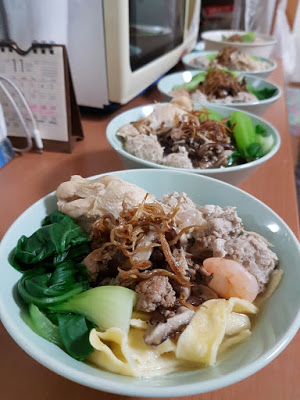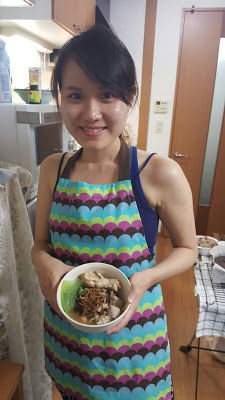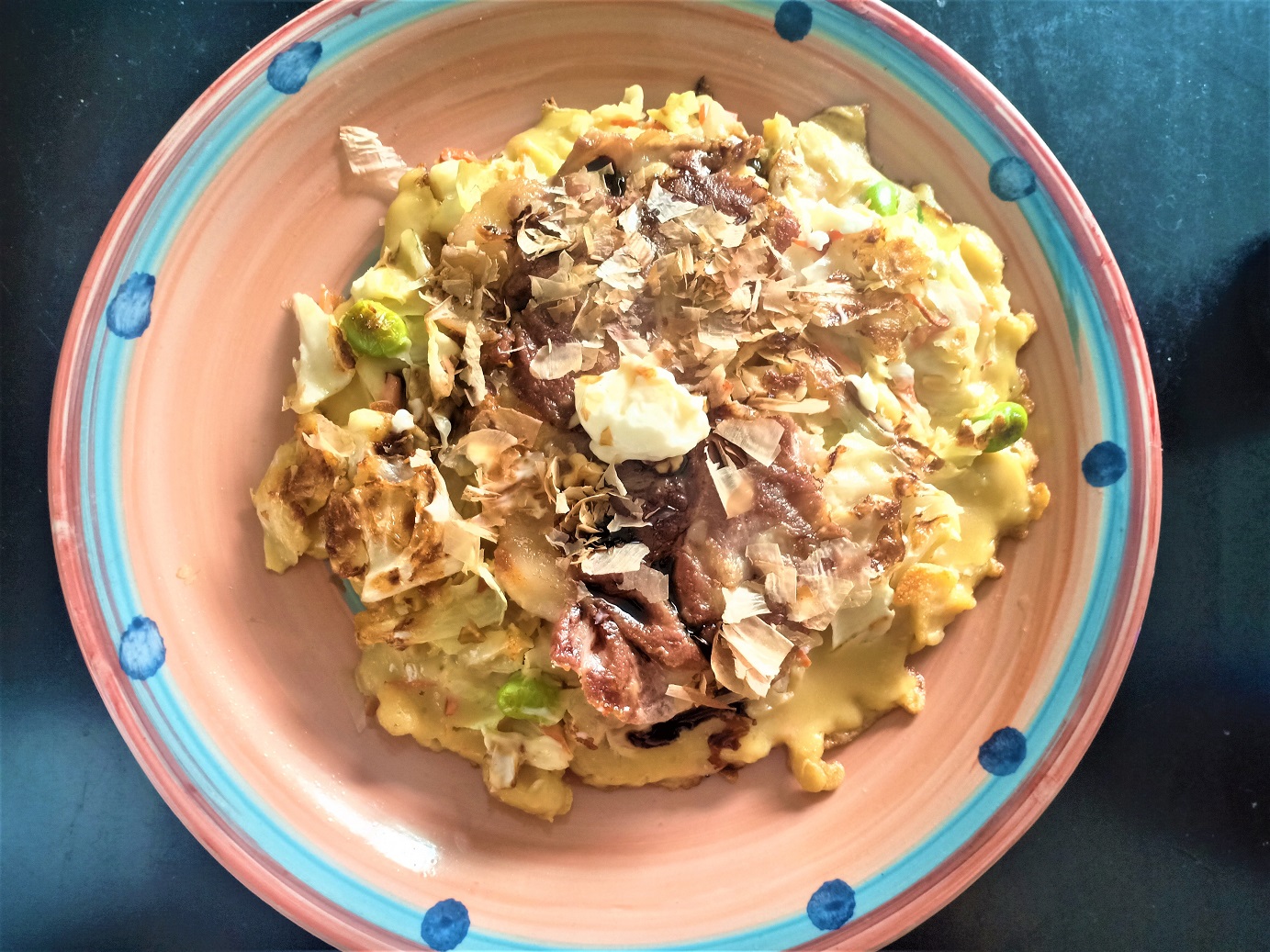This dish needs no introduction to most Malaysians, especially the Chinese Malaysians. It’s sold in almost all, if not, most hawker centres or food courts across Malaysia; I’m also sure there is a halal version of Pan Mee sold somewhere in the big cities.

To me, Pan Mee is my soul food, comfort food that I’ve been eating since young, be it breakfast or lunch, come sunshine or rain (lol). And yes, when I was studying abroad I was constantly craving for a bowl of Pan Mee goodness, its piping hot savoury broth, the crispy ikan bilis (anchovies), the fat-laden yet sinfully delicious pork mince stir-fried with black fungus, and last but not least, the good-old handmade flat noodles (although nowadays most restaurants made them by machines).
This is one of the dishes that I learnt from my grandma and mom. Now and then, when I have the chance to make and eat Pan Mee, it really does bring me down memory lane. As a kid, I watched my grandma and mom mixing the flour and eggs to make the dough and I would join in the fun kneading the dough, though I was making more of a mess than being a helping hand. Being a traditional housewife, my grandma is an expert of Southern Chinese cuisines and makes everything from scratch; just imagine she makes fishballs from whole fish! I would sit beside her on a tiny wooden stool, watching attentively as my grandma skillfully scrapped the flesh off the bone using a teaspoon (as tiny fish is used, it’s difficult to fillet using knives), she then carefully picked out any tiny bones as she minced the fillet on a chopping board. After the fillet was finely minced, she carefully placed some mince in her palms and squeezed the mince in her fist until the mince came out of her fist through the gap between thumb and index finger. The fish balls were then set aside in ice water for later use. As you could tell, the fish balls were made from 100% fish with flour or other ingredients mixed in unlike the ones sold in supermarkets. Sometimes she made fishcakes using the same method except for shaping them into balls, instead it’s a single huge chunk of fish mince pan fried first in hot oil and then sliced. As a kid, I would eat them right after it’s being fried when it’s crispy and piping hot, yums! As my grandma gets older and weaker, she can no longer cook and make these delicious hand-made fishballs and fishcakes; the taste, however, will forever be treasured and remembered.
So, after knowing the story behind my comfort food, I would love to share with you all my take on this wholesome yet tasty dish.
Preparation time: 15mins
Cooking time: 1.5-2 hours
Serving portion: Approx. 4 persons
Ingredients:
A) Noodles:
Plain flour/Multi-purpose flour – Approximately 100-150g
Eggs – 1 or 2 for colouring and flavour
Water – Approx. 1.5 cups
Salt for seasoning
B) Broth:
Pork bones, can be substituted by chicken bones/drumsticks – Approx. 350 – 500g
Dried anchovies – Approx. 60-80 g (can be varied according to personal preference)
Approx 1 litre of water
C) Condiments:
– Deep fried anchovies – amount depending on personal preference
– Pork mince stir fry (can be sub with chicken):
Garlic – 2 cloves
Ginger – to taste
Pork mince – Approx 150 – 200g
Black fungus – Approx 30g (can be varied) – can be opted out if not available at your nearest supermarkets, but it’s preferable for adding extra crunch to texture
Shitake mushroom
Soy sauce to taste
Salt and pepper
Fish sauce – optional
– Boiled leafy vegetables (Pak choy or usually sweet potato leaves are used)
Method:
A) Noodles
Mix all the ingredients above in a huge bowl and knead into dough. Feel the texture, if it’s too wet, add more flour. Continue kneading for about 15mins and set aside covered with a wet cloth (very important as you don’t want the dough to dry out).
B) Broth:
Add all the ingredients above in a soup pot filled with water. Turn up heat until boil, you will see brown froth forming on the surface. Turn off heat and pour the water away. Rinse the ingredients with water and fill the pot with approximately 1 litre of water and let it cook on medium low heat for at least 30 mins. Let it simmer longer up to 1 hour for extra flavour.
C) Condiments:
1. Deep fry anchovies in hot oil and set aside.
2. For pork mince stir fry: First, fry the garlic in hot oil until fragrant then add in pork mince and seasoning. Lastly, add mushroom and black fungus. Stir fry over high heat for 3-5 mins and set aside.
3. Boil leafy vegetables in boiling water for 1-2 mins and set aside in cold water.
After the broth and condiments are done, it’s time to roll out the dough and cook the noodles. I would advise cooking the noodles in a pot of boiling water and not in the broth to avoid starchy taste in broth.
For rolling out or flattening the dough, divide dough into several smaller portions. Flatten the divided dough using a rolling pin or a glass bottle to approx 0.5 cm thickness (as thin as possible). Dust your work station or board (or whatever you are rolling the dough on) and rolling pin with flour from time to time to avoid the dough sticking to the board. Slightly stretch the flattened dough and tear the flattened dough into small sheets (it can be any size or shape you want, free style!) and cook them in boiling water for about 2 mins. Alternatively, if you have a noodle-making machine, the machine does all the job for you 🙂
Lastly, put the cooked noodles in a soup bowl, then add in the broth. Last but not least, assemble the condiments however you like on top of the noodles. Voila, the dish is done. Dig in and enjoy while it’s piping hot.
ps: For those lucky Malaysians who can easily eat Pan Mee at the nearest restaurant or food court, I envy you. For Malaysians living abroad and craving for Pan Mee, I know making it is quite tedious and somewhat time-consuming, but you know, sometimes nothing is more comforting than a bowl of comfort food in the middle of winter. So I would do anything to replicate this dish just to satisfy my cravings, I’m a foodie afterall 🙂











